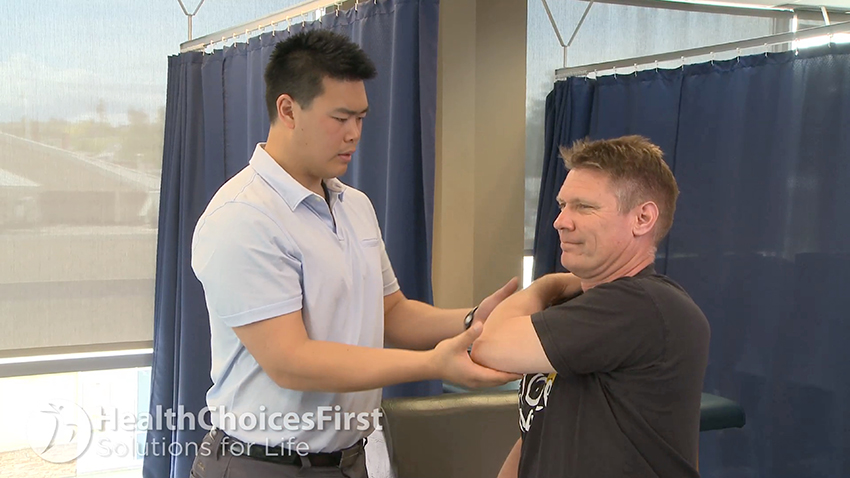Chronic Disease Education
Acute Condition Education
Working with your Family Physician
Working with Allied Care Providers
Physiotherapy - Shoulders

Knowledge is Power.
True/False - Quiz: Do You Understand Physiotherapy - Shoulders?
Information - Physiotherapy - Shoulders
 The shoulder is the most mobile joint in the body, and is prone to a number of injuries, from shoulder dislocation to rotator cuff issues. The usual treatment for shoulder injuries is non-surgical options such as medications, bracing and physiotherapy. Shoulder surgery is generally only explored if the non-operative options fail, and the type the orthopaedic surgeon performs depends on the severity of your issue. Whether your shoulder injury treatment or surgical or non-surgical, you can benefit from the help of a physiotherapist during your recovery.
The shoulder is the most mobile joint in the body, and is prone to a number of injuries, from shoulder dislocation to rotator cuff issues. The usual treatment for shoulder injuries is non-surgical options such as medications, bracing and physiotherapy. Shoulder surgery is generally only explored if the non-operative options fail, and the type the orthopaedic surgeon performs depends on the severity of your issue. Whether your shoulder injury treatment or surgical or non-surgical, you can benefit from the help of a physiotherapist during your recovery.
Physiotherapy for Shoulder Injuries
Usually, your physiotherapist will start you off with exercises to improve your range of motion and strengthen your arm and shoulder. If you’ve been hospitalized for shoulder surgery, your physiotherapy treatment may begin in the hospital, and continue once you’re home.
Types of Physiotherapy for Shoulder Injuries
 • Range of motion and strengthening exercises targeting a range of muscles including the deltoids, trapezius muscles, biceps, triceps, supraspinatus and infraspinatus
• Range of motion and strengthening exercises targeting a range of muscles including the deltoids, trapezius muscles, biceps, triceps, supraspinatus and infraspinatus
• Manual therapy (hands-on manipulation)
• Ultrasound: This deep heating treatment is administered by your physical therapist using a wand that’s connected to an ultrasound machine pressed against your skin.
• Dry needling and/or acupuncture: Some patients find relief from a practitioner inserting short, thin needles into pressure points.
• TENS (transcutaneous electrical nerve stimulation): Your physiotherapist may use this technique to decrease pain around the injury.
• Taping: Your physiotherapist may tape the injured site to provide support and stability while you heal.
• Heat therapy: The physiotherapist may incorporate heat into your treatment to reduce pain, increase circulation and relax the muscles.
• Massage and other soft tissue techniques
Your physiotherapist can help you avoid activities and exercises that trigger pain and discomfort. Helping you regain functional use of your arm and shoulder is the primary goal of your physiotherapist. The sooner you see out a physiotherapist for treatment after an injury or surgery, the better your outcome will be.
Print this Action Plan and check off items that you want to discuss with your healthcare provider
-
Usually, your physiotherapist will start you off with exercises to improve your range of motion and strengthen your arm and shoulder. If you’ve been hospitalized for shoulder surgery, your physiotherapy treatment may begin in the hospital, and continue once you’re home.
-
Depending on your injury, your physiotherapist will recommend treatments such as ultrasound, dry needling/acupuncture, taping, TENS, heat therapy and massage.
-
You'll do range of motion and strengthening exercises, combined with manual therapy (hands-on manipulation) with your physiotherapist.
-
The sooner you see out a physiotherapist for treatment after an injury or surgery, the better your outcome will be.
-
One of the most common causes of elbow pain is repetitive strain or overuse of the muscles of the forearm. Eventually, the muscle and tendon can become overloaded and result in pain or weakness with any hand movements.
